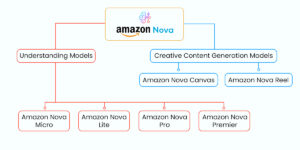Many marketers spend time on activities that do not bring real results. They post content, engage on social media, and try different strategies but do not see growth.
The 80/20 Growth Formula helps focus on the few actions that generate the most impact, leading to business growth with less wasted effort.
I completely change my approach for this article and I’d love to hear your feedback! This is the first article of the MKT Lab (Marketing Lab).
The 80/20 rule has been discovered by Vilfredo Pareto in 1897.

My Experience With This Approach
When I started in digital marketing in January 2020, I tested multiple platforms (including Facebook, X, Tumblr, Pinterest, Instagram, Webtalk and many more), content types, and strategies before realizing that not all efforts were equally effective.
At first, I was creating content, engaging on social media, and promoting my business everywhere—without clear direction. I quickly learned that some actions drive most of the results, while others waste time.
For example, my experience with affiliate marketing and content creation showed me that high-value educational content brings in leads organically.
I applied this same strategy when building my brand, focusing 80% on delivering value through articles, in-depth guides and practical advice while keeping promotion at 20% (maximum).
Over time, I cut out low-impact activities and doubled down on what worked, allowing me to grow without constantly chasing new trends.

Key Components for Business Growth
1. 80% Value-Driven Content
Most of your content should provide value. This means creating helpful, educational, or engaging content that solves your audience’s problems. (Like what you’re reading right now).
What I Learned from Experience:
In my journey, educational and problem-solving content has consistently performed the best.
Whether it’s blog posts, video scripts, or email content, the focus has always been on helping people make progress in their online business.
In affiliate marketing, I never promoted a product without testing it myself and providing real insights. I lead by example, as I learned from my mentor Vick Strizheus.
The same approach applies when creating marketing or business content—it should solve a real problem before asking for anything in return.
What to include in your value-driven content:
-
How-to guides and tutorials
-
Case studies and success stories
-
Industry insights and trends (I love to use Google trends for this)
-
Actionable tips and strategies
-
Answers to common questions
Your audience should find your content useful, even if they are not ready to buy. This builds trust and keeps them engaged.

2. 20% Promotional Strategy
You still need to promote your offers, but it should be strategic and not overwhelming. Sales should be part of your content but should not dominate it.
How I Applied This in My Business:
When I built my hub, I focused first on providing real value, and sales naturally followed. I used soft CTAs, leading with education before making an offer.
Often I use Masterclass or training as free educational content. I invite you to join my VIP Community to benefit from free courses.
Instead of hard-selling, I positioned my services as a natural next step for those who needed more help.
For example, in my affiliate marketing strategy, I never pushed direct links without explaining why a tool was valuable. I have also often done 1:1 calls with people interested in the affiliate products I promote.
Why?
Because it builds trust, people purchase from people. It’s about building relationships.
The same principle applies when offering services, PR outreach, or marketing solutions—the more value you provide upfront, the more trust you build.
How to apply this strategy:
-
Mention your product or service naturally inside valuable content.
-
Use soft CTAs (Call-to-Actions) like “If you need more help, check out my service.”
-
Share customer/client testimonials or case studies to build credibility.
-
Make promotional content clear but focused on benefits, not just features.
If you create five pieces of content per week, four should provide value, and only one should be sales-focused.
3. Feedback Loops (Constant Optimization)
The 80/20 rule also applies to analyzing results. Not everything will work, so it’s important to focus on what is getting results and stop what is not.
How I Use Feedback Loops to Optimize My Business
In my content and marketing approach, I have always prioritized real data over assumptions.
For example, I analyzed which blog topics brought in the most traffic and stopped wasting time on content that wasn’t performing.
The same applies to social media and email marketing—I consistently review which posts get the most engagement and which emails lead to conversions. Instead of posting more content, I focus on refining what already works.
Same for marketing lead campaigns, as you can see below, I got an amazing 40% conversion rate with the VIP community + Newsletter campaign. As I progressed into the campaign, the percentage have been between 35 and 40%.

Results are not typical and may vary based on niche and execution.
How to use feedback loops:
-
Track engagement: Which posts, emails, or videos get the most responses?
-
Check conversion rates: Which content leads to sales or sign-ups?
-
Ask for feedback: What do your audience and customers find most helpful?
Instead of creating more content, focus on making better content based on what works.
Steps to Execute: How to Apply the 80/20 Rule
Step 1: Identify What Truly Matters
Before creating content, you need to understand what your audience actually cares about.
How I Identify Key Topics
When I started, I made the mistake of creating content based on what I thought people wanted, instead of researching what they were actually searching for. Now, I use data-driven approaches like Google Trends, SEO tools, and audience feedback to guide my content strategy

How to do this:
-
List the biggest problems your audience faces. Think about their struggles, challenges, and frustrations.
-
Look at search trends. Use tools like Google Trends, AnswerThePublic, or YouTube search suggestions to see what people are asking.
-
Check competitors. Look at the most popular content in your industry. What topics get the most engagement?
-
Engage with your audience. Ask questions in posts or emails to learn what they need help with.
When you create content based on real audience problems, it has a much higher chance of working.
Step 2: Build a High-Impact Content Plan
Once you know your audience’s key problems, create content that directly addresses them.
How I Use This Approach in My Own Content
For my social media and blog content, I use the 80/20 ratio so that my audience gets consistent value, while still seeing my offers.
Example:
If you post five times per week:
-
Monday: Educational post
-
Tuesday: Case study or behind-the-scenes
-
Wednesday: Actionable tip
-
Thursday: Customer testimonial or a light promotion
-
Friday: Industry insight or long-form content
I always avoid promotions over the weekend (even Friday!)
This balance ensures that your audience stays engaged while still seeing your offer.
Step 3: Test, Track, and Optimize
After posting content, the next step is analyzing what works best.
How I Optimize my Content for Better Results (yes, that’s a big part!)
I constantly review which content pieces generate engagement and conversions. If a strategy or content type is not working, I adjust or remove it instead of wasting time on it.
How to improve based on data:
-
Cut what does not work. If a type of content is consistently underperforming, stop creating it.
-
Do more of what works. If certain topics or formats get more engagement, create more of them.
-
Repurpose top-performing content. Turn a successful article into a video, podcast, or infographic.
Step 4: Scale What’s Working
Once you identify what brings results, scale it up to maximize growth.
How I Scaled My Content and Marketing Strategies
Over time, I have learned that scaling is about doing more of what works, not just adding more tasks.
Instead of expanding too fast, I optimize and refine before increasing my efforts.
How to scale effectively:
-
Automate processes: Use scheduling tools for social media, email, or content publishing.
-
Repurpose content: Expand successful blog posts into detailed guides, YouTube videos, or LinkedIn posts.
-
Double down on high-performing channels: If video performs better than written content, focus on video. Personally, for me it’s written content.
Outcome: Less Effort, More Growth
By using the 80/20 Growth Formula, you will:
✔ Focus only on high-impact activities.
✔ Avoid wasting time on content that does not convert.
✔ Build a system where content generates consistent traffic and leads.
Next Step: Apply It for 30 Days
Start by analyzing your content strategy, remove unnecessary activities, and track results.
After 30 days, you will see clear growth with less effort.
Thanks for reading.
Laurence
Frequently Asked Questions
What is the 80/20 formula, and how can it help my small business?
The 80/20 formula, also known as the Pareto Principle, suggests that 80% of your results come from 20% of your efforts. For a small business, this means focusing on the most impactful activities to effectively grow your business.
By identifying and investing in the 20% of efforts that drive the most business growth, you can optimize resources and maximize profits. This approach helps small business owners prioritize tasks that are crucial for business growth and eliminate those that don’t contribute significantly.
How can I identify the 20% of efforts that drive 80% of my business growth?
To pinpoint the 20% that drives significant business growth, analyze your current operations and results. Look into your customer base to see which product or service generates the most revenue.
Conducting thorough market research can help you understand which marketing strategies are bringing in the most new customers.
Also, review sales data to identify patterns and trends that highlight your most successful growth strategies.
How can the 80/20 formula improve customer retention and customer loyalty?
Applying the 80/20 formula to customer loyalty means identifying and nurturing the top 20% of your customer base that contributes to 80% of your profits. This can be achieved by implementing a robust customer loyalty program and providing personalized experiences. By focusing your efforts on customer retention, you can enhance customer loyalty and build long-term relationships, which are essential for the sustained growth of your business.
In what ways can the 80/20 formula help in launching a new product?
When launching a new product, the 80/20 formula can guide you to focus on the most promising target market segments that are likely to generate 80% of the sales. It encourages you to streamline your marketing efforts and concentrate on the new market opportunities that offer the greatest potential for success. By doing so, you minimize risk and resources while maximizing the impact of your launch.
How can the 80/20 formula help in decision-making for small business owners?
The 80/20 formula can help your business in decision-making by identifying critical areas that significantly impact revenue growth. By focusing on the 20% of products or services that generate 80% of profits, small startup owners can make informed decisions to expand your business and achieve sustainable growth. This strategy allows you to allocate resources effectively and grow market share.
What are some common mistakes businesses make when applying the 80/20 rule?
One common mistake business leaders make when applying the 80/20 rule is focusing solely on current potential customers who bring immediate revenue, neglecting the need to diversify their product line and explore new markets. This may limit growth stage opportunities and hinder business grow.
How can I use the 80/20 principle to improve my business’s financial health?
To improve your business’s financial health using the 80/20 principle, focus on the areas of your business that generate the most value. For example, identify which products or services increase customer satisfaction and drive repeat business. This approach helps in starting and growing a business effectively.
One of the best ways to grow quickly is to look for ways to offer a discount on popular items, thus attracting many customers. Regularly attending networking events can also provide ways to grow by connecting with potential partners or clients. Utilize CRM systems to gather customer feedback, which supports continued growth.
To support your business in becoming a successful business, prioritize the business needs that most impact your business goals. By doing so, you can ensure whether the business aligns with its core values and grow quickly. The 80/20 principle is one of the best ways to strategically allocate resources, making running a business more efficient.
Source: fractalmax.agency




